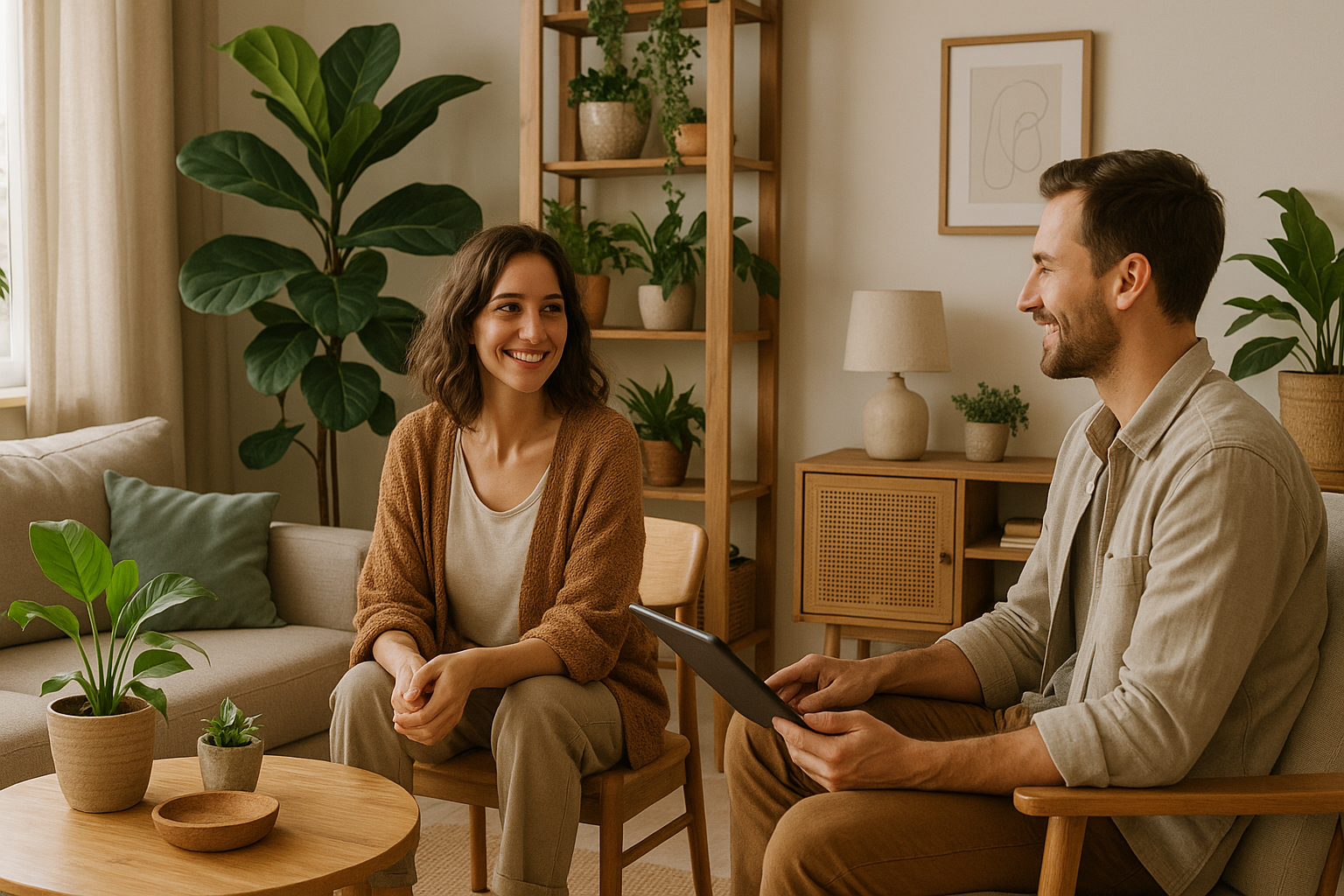Creating a beautiful home doesn’t have to come at the expense of the environment. With fast furniture, synthetic materials, and trend-driven consumerism on the rise, many homes end up filled with items that are short-lived, wasteful, or harmful to the planet.
Fortunately, you can craft a stylish, personalized space that reflects your values through mindful, sustainable choices.
Why Sustainable Decoration Matters
Home decor is often overlooked in sustainability conversations, yet it has major impact:
- Fast furniture creates enormous landfill waste
- Synthetic decor often contains chemicals and microplastics
- Constant redecoration encourages overconsumption
- Transport and packaging contribute to emissions
Decorating consciously means choosing quality, longevity, and expression over excess.
Embrace Minimalism With Warmth
A sustainable home doesn’t have to be stark or sterile. Minimalism here is about being intentional—not about living with nothing.
Tips:
- Choose a calming, cohesive color palette
- Prioritize function and beauty in each item
- Leave space around objects for visual clarity
- Display fewer things with more meaning
“Less but better” is a guiding principle for sustainable style.
Use Natural, Reclaimed, or Recycled Materials
Materials matter when it comes to sustainability and health.
Prefer:
- Solid wood (especially reclaimed or FSC-certified)
- Linen, cotton, bamboo, or wool textiles
- Clay, ceramic, and stone for decor pieces
- Recycled glass or metal
- Low-VOC paints and finishes
Avoid plastic-based items or MDF furniture that off-gas and degrade quickly.
Buy Second-Hand or Vintage Decor
Thrift stores, online marketplaces, and flea markets are goldmines for unique, affordable, and sustainable home pieces.
Benefits:
- Reduces demand for new manufacturing
- Saves items from landfill
- Supports a circular economy
- Adds charm and character to your space
Mix second-hand with new sustainable items to create a timeless look.
Choose Quality Over Trends
Trendy decor often leads to frequent redecorating and waste.
What to do:
- Focus on timeless designs and neutral bases
- Add style through small, changeable accents (like throw pillows or wall art)
- Invest in versatile, well-made furniture
- Ask: “Will I still love this in 5 years?”
Let your home evolve slowly—not with every trend.
Decorate With Plants
Plants bring beauty, color, and life to any space—and they’re sustainable by nature.
Try:
- Hanging plants in macramé holders
- Potted herbs on kitchen windowsills
- Large leafy plants as natural “statements”
- Succulents or cacti for low-maintenance style
Plants purify air and create a calming environment.
Upcycle and DIY
Get creative with what you already have.
Ideas:
- Turn old jars into vases or candle holders
- Refinish or paint existing furniture
- Sew cushion covers from old clothes or linens
- Frame scraps of fabric, wallpaper, or pressed flowers as art
- Build shelves or planters from leftover wood
Making your own pieces adds personality and reduces waste.
Be Intentional With Wall Art and Accents
Art and accessories add soul to a space—but don’t need to be mass-produced or expensive.
- Support local artists or buy digital prints
- Use nature (leaves, stones, driftwood) as decor
- Create a gallery wall with family photos or memories
- Choose meaningful over decorative clutter
Let each piece reflect something you truly love.
Light It Right
Lighting has a huge impact on mood and energy usage.
Tips:
- Use LED bulbs and warm white tones
- Rely on natural light as much as possible
- Add floor or table lamps for cozy layers
- Use timers or smart bulbs to reduce electricity waste
Beautiful lighting = less stress + lower bills.
Let Your Home Reflect Your Values
A sustainable home is more than a design style—it’s a mindset. It’s a place where every object has a purpose, where comfort meets ethics, and where beauty coexists with care for the planet.
Decorate slowly, mindfully, and from the heart. That’s where true style—and sustainability—begin.
